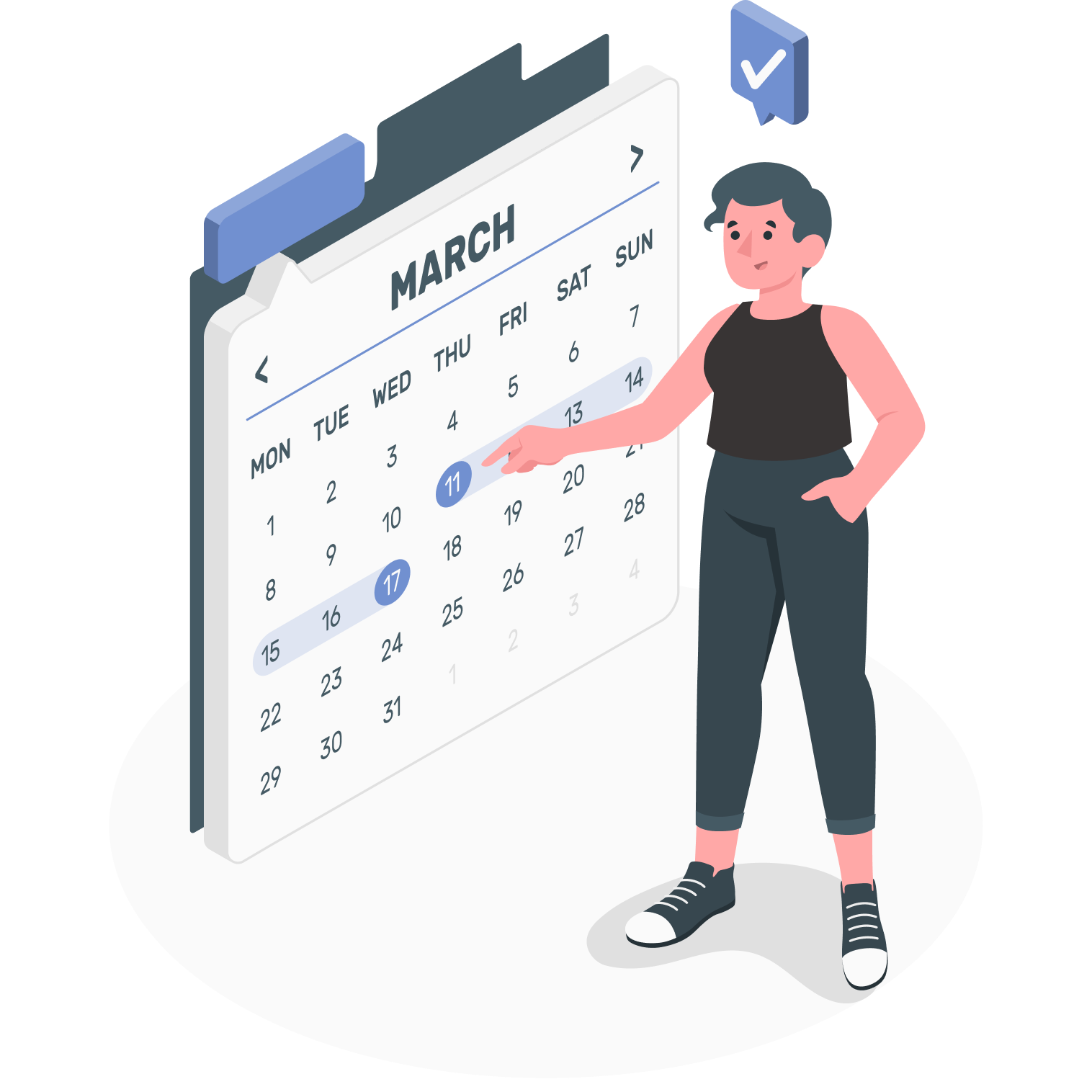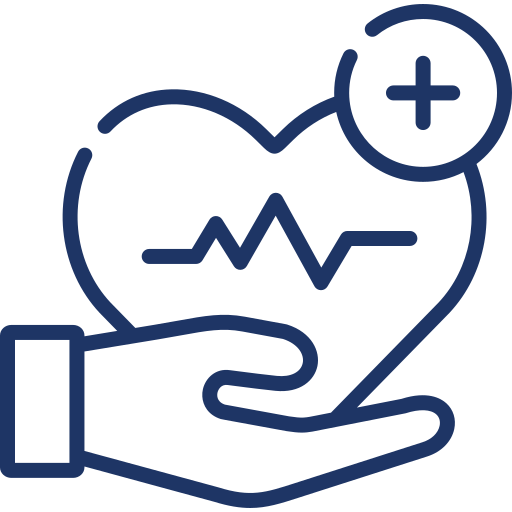Nowadays, where self-care is a top priority, many of us are looking for a sustainable way to lose weight. Something that goes beyond the usual diet and exercise routines. There’s a new approach in town that’s all about combining science, innovation, and a holistic understanding of how our bodies work. It’s called Medicine-Assisted Weight Loss.
Medical experts provide guidance for this new approach. It focuses on the science behind weight loss. So, let’s take a closer look at Medication-Assisted Weight Loss. And how it’s helping us shed those extra pounds and live a healthier life in a way that makes sense.
Start Your Personalized Weight Loss Journey – Click Here
The Need for Modern Solutions
Dealing with weight issues isn’t always as straightforward as it seems. Obesity rates are rising as our lives become more hectic. Therefore, the traditional advice of simply eating less and exercising more is no longer sufficient. People with morbid obesity whose surgical options were Bariatric Surgery, Gastric Sleeve, or Gastric Bypass for weight loss can now avail themselves of a novel and non-surgical option. They can be prescribed a “Medicine Assisted Weight Loss” regime that leverages Mounjaro, Ozempic, Wegovy, Rybelsus, and Saxenda-type drug treatments to support weight loss efforts..
That’s where Medication-Assisted Weight Loss steps in – it’s like a ray of light in a complex world. This method considers all the puzzle pieces and uses medical knowledge to help us address the challenge of losing weight.
Inspiration from Celeb Weight Loss Success Stories
Some famous celebrities are embracing a new way to shed those extra pounds. They’re using prescription drugs to help with their weight loss journeys and they’re not shy about sharing their experiences.
Elon Musk, the genius behind Tesla and SpaceX, posted on Twitter about his “fit, ripped, and healthy” look. He’s into intermittent fasting and is giving a nod to a weight loss med called Wegovy (also known as Semaglutide). His post about Wegovy has definitely caught people’s attention. It got them thinking about the possibilities of medically supervised weight loss.
Start Your Personalized Weight Loss Journey – Click Here
Celebrities like Musk have numerous followers. Their words and success stories can really shape how we think about using prescription meds for weight loss. When he talks openly about how Wegovy has helped him out, it starts a conversation. It inspires others to consult with their doctors about similar weight loss options.
Musk isn’t the only one praising medication-assisted weight loss. Charles Barkley, the NBA legend, and Hall of Famer, shed an incredible 60 pounds in six months. He gave a thumbs-up to tirzepatide, also known as Mounjaro, a rival to semaglutide.
He teamed up this medication with a healthy diet and workouts. As a result of this weight loss method, he dropped his body weight from 352 to 290 pounds.
There are other big names out there who’ve also shared their journeys and given a thumbs-up to these approaches. These stories resonate with us and demonstrate how these medications can assist in weight management.
Understanding GLP1 Drugs
You might know GLP1 drugs as diabetes treatments, but they’re making waves as innovative weight loss solutions too. These drugs work by imitating the actions of GLP1. It’s a hormone found in our intestines that does wonders for controlling glucose levels and making us feel full.
The core idea behind GLP1 drugs is to activate GLP1 receptors in the pancreas. This prompts the release of insulin and helps regulate blood sugar. These drugs have a broader mission. They also influence our appetite and digestion processes.
In essence, they’re taking a comprehensive approach to managing weight, addressing both the physical and behavioral factors that contribute to overeating. It’s like a two-for-one deal – handling blood sugar and giving us a helping hand with our eating habits.
Start Your Personalized Weight Loss Journey – Click Here
Reduction in Heart Disease Risk
Recent studies have unveiled an intriguing twist to the story of GLP1 drugs. They’re also showing potential for some serious heart benefits. Cutting-edge research is pointing towards a reduced risk of heart disease among people who use GLP1 drugs for weight management.
This discovery goes beyond the surface, hinting at a bigger picture in healthcare. It’s all about linking the dots between how our metabolism works and the well-being of our cardiovascular system.
It’s becoming clear that GLP1 drugs offer more than just weight loss. They’re becoming a key player in a comprehensive approach to managing weight. It’s all about boosting your overall vitality, and even giving your heart a helping hand.
Side Effects of GLP1 Drugs
While GLP1 medications hold promise for weight loss and heart benefits, it’s essential to be aware of potential downsides. Possible side effects include:
- Some individuals may experience temporary issues like nausea and diarrhea when starting GLP1 drugs. Usually, these effects tend to diminish as your body adapts to the medication.
- It’s crucial to discuss any other medications you’re taking with your healthcare provider. There could be interactions between GLP1 drugs and other treatments you’re on.
Knowing about potential side effects helps you make a well-informed decision. It’s always a good idea to have an open conversation with your healthcare professional. This way, you could the benefits against any possible drawbacks.
Start Your Personalized Weight Loss Journey – Click Here
Popular Weight Loss Medications
| Name of Weight Loss Medication | Ozempic (Semaglutide) | Wegovy (Semaglutide) | Mounjaro (Tirzepatide) | Rybelsus (Semaglutide) | Saxenda
(Liraglutide) |
| Brief Description | Prescription medication used to improve blood sugar control in adults with type 2 diabetes. It may also be used to treat obesity in adults with at least one weight-related condition. | Prescription medication used to treat obesity in adults with at least one weight-related condition. It may also be used to improve blood sugar control in adults with type 2 diabetes. | Prescription medication used to treat obesity in adults with at least one weight-related condition. It may also be used to improve blood sugar control in adults with type 2 diabetes. | Prescription medication used to improve blood sugar control in adults with type 2 diabetes. It may also be used to treat obesity in adults with at least one weight-related condition. | Prescription medication used to treat obesity in adults with at least one weight-related condition. It may also be used to improve blood sugar control in adults with type 2 diabetes. |
| Mechanism of Action | Glucagon-like peptide-1 (GLP-1) receptor agonist. GLP-1 is a hormone that helps to control blood sugar levels and appetite. | Glucagon-like peptide-1 (GLP-1) receptor agonist. GLP-1 is a hormone that helps to control blood sugar levels and appetite. | Glucagon-like peptide-1 (GLP-1) receptor agonist and glucagon receptor antagonist. GLP-1 is a hormone that helps to control blood sugar levels and appetite. Glucagon is a hormone that raises blood sugar levels. | Glucagon-like peptide-1 (GLP-1) receptor agonist. GLP-1 is a hormone that helps to control blood sugar levels and appetite. | Glucagon-like peptide-1 (GLP-1) receptor agonist. GLP-1 is a hormone that helps to control blood sugar levels and appetite. |
| Dosage | 0.25mg, 0.5mg, 1mg | 0.25mg, 0.5mg, 1mg, 1.7mg, 2.4mg | 2.5mg, 5mg, 7.5mg, 10mg | 3mg, 7mg, 14mg | 0.6mg, 1.2mg, 1.8mg, 2.4mg, 3mg |
| Administration | Subcutaneous injection once weekly | Subcutaneous injection once weekly | Subcutaneous injection once weekly | Oral tablet once daily | Subcutaneous injection once daily |
| Effectiveness Rate | 10-14% weight loss at 68 weeks | 15-20% weight loss at 68 weeks | 11-21% weight loss at 68 weeks | 10-14% weight loss at 68 weeks | 10-14% weight loss at 68 weeks |
| Common Side Effects | Nausea, vomiting, diarrhea, abdominal pain, constipation | Nausea, vomiting, diarrhea, abdominal pain, constipation | Nausea, vomiting, diarrhea, abdominal pain, constipation | Nausea, vomiting, diarrhea, abdominal pain, constipation | Nausea, vomiting, diarrhea, abdominal pain, constipation |
| Contraindications | Type 1 diabetes, diabetic ketoacidosis, pancreatitis, medullary thyroid cancer | Type 1 diabetes, diabetic ketoacidosis, pancreatitis, medullary thyroid cancer | Type 1 diabetes, diabetic ketoacidosis, pancreatitis, medullary thyroid cancer | Type 1 diabetes, diabetic ketoacidosis, pancreatitis, medullary thyroid cancer | Type 1 diabetes, diabetic ketoacidosis, pancreatitis, medullary thyroid cancer |
| Cost | $800-$1000 per month | $1300-$1500 per month | $1200-$1400 per month | $800-$1000 per month | $1000-$1200 per month |
| Availability in USA | 2 mg dose (8 mg/3 mL prefilled pens) in limited supply and the company estimates this will continue through mid-August 2023 | As of August 2023, the manufacturer is limiting quantities of the lower dose strengths (0.25 mg, 0.5 mg, and 1 mg) to wholesalers for distribution to retail pharmacies | Supplies of the 10mg dose are expected to be tight through September 2023, and 7.5mg, 12.5mg, and 15mg doses are intermittently available | Novo Nordisk, the manufacturer of Rybelsus, has increased production and, as of October 2023, Rybelsus is generally available at most pharmacies in the US. | Available with prescription but Saxenda (liraglutide) 6 mg/ml, 3 ml solutions will be in limited supply for the rest of 2023 |
Start Your Personalized Weight Loss Journey – Click Here
Weight Loss Using Ozempic: A Comprehensive Guide
What is Ozempic?
Ozempic (semaglutide) is a once-weekly injectable medication used to treat type 2 diabetes and obesity. It’s a glucagon-like peptide-1 (GLP-1) receptor agonist. It works by mimicking the effects of the hormone GLP-1.
GLP-1 helps regulate blood sugar levels by increasing insulin production and decreasing glucagon production. Ozempic also helps to suppress appetite and promote feelings of fullness.
How does Ozempic work?
Ozempic works by binding to GLP-1 receptors in the gut and pancreas. This binding activates the receptors, which then signal the body to release insulin and suppress glucagon production. Insulin helps to lower blood sugar levels, while glucagon helps to raise blood sugar levels. By increasing insulin production and decreasing glucagon production, Ozempic helps to lower blood sugar levels.
Who is Ozempic for?
The US Food and Drug Administration (FDA) approves Ozempic for the treatment of type 2 diabetes in adults. It also acquired approval for the treatment of obesity in adults who have:
- a body mass index (BMI) of 30 kg/m2 or higher
- a BMI of 27 kg/m2 or higher
- with at least one weight-related health condition, such as high blood pressure, high cholesterol, or type 2 diabetes
Start Your Personalized Weight Loss Journey – Click Here
What are the side effects of Ozempic?
The most common side effects of Ozempic are nausea, vomiting, diarrhea, constipation, and headache. Other side effects can include:
- Abdominal pain
- Dizziness
- Fatigue
- Gas
- Indigestion
- Injection site reactions
- Low blood sugar (hypoglycemia)
- Pancreatitis
How to Use Ozempic for Weight Loss
The recommended dosage of Ozempic for weight loss is 0.25 mg once weekly. You can increase the dose to 0.5 mg and then to 1 mg after 4 weeks. The recommendation is to inject Ozempic under the skin in the thigh, abdomen, or upper arm.
How to take Ozempic
It’s vital to take Ozempic at the same time each week to maintain consistent blood levels of the medication.
What to expect when taking Ozempic
When you first start taking Ozempic, you may experience some side effects, such as nausea, vomiting, diarrhea, and constipation. These side effects usually go away within a few weeks.
You may also experience weight loss when you take Ozempic. The amount of weight you lose will vary depending on your individual circumstances.
The Benefits of Weight Loss Using Ozempic
Weight loss can have many benefits for your health, including:
- Reducing your risk of heart disease, stroke, and type 2 diabetes
- Improving your blood pressure and cholesterol levels
- Reducing your risk of certain types of cancer
- Improving your sleep quality
- Increasing your energy levels
- Boosting your self-esteem
Start Your Personalized Weight Loss Journey – Click Here
The Safety of Weight Loss Using Ozempic
Ozempic is generally safe for most people. However, it is important to be aware of the risks, which include:
- Low blood sugar (hypoglycemia)
- Pancreatitis
- Allergic reactions
If you have any concerns about the safety of Ozempic, talk to your doctor.
Where to Get Ozempic
Ozempic is a prescription medication, so you will need to see a doctor to get it. Your doctor can write you a prescription for Ozempic, which you can then take to a pharmacy to have it filled. It is available at most pharmacies, including chain pharmacies such as CVS, Walgreens, and Walmart. You can also get Ozempic through mail-order pharmacies.
How to get a prescription for Ozempic
To get a prescription for Ozempic, your doctor must assess your health and determine if it’s right for you. Visit Nao Medical to get a health assessment and a doctor’s prescription.
The cost of Ozempic
The cost of Ozempic can vary depending on a number of factors, including your insurance coverage, the pharmacy you use, and your doctor’s prescription.
Without insurance, Ozempic can cost over $900 per month. However, most insurance plans cover Ozempic, and you may only need to pay a copay or deductible.
Start Your Personalized Weight Loss Journey – Click Here
Weight Loss Using Wegovy: A Comprehensive Guide
What is Wegovy?
Wegovy is a brand name for semaglutide, a prescription medication that is used to help with weight management in certain people.
How does Wegovy work?
Wegovy works by mimicking the action of a hormone called GLP-1, which is released after eating. GLP-1 helps to regulate appetite and food intake. Wegovy helps to reduce appetite and make you feel full faster, which can lead to weight loss.
Specifically, Wegovy binds to GLP-1 receptors in the gut and brain. This causes the release of hormones that suppress appetite and increase feelings of fullness. It also slows down the movement of food through the digestive system, which helps you feel full longer.
Who is Wegovy for?
Wegovy is for adults with obesity (BMI of 30 or higher) or overweight (BMI of 27 or higher) who also have weight-related medical problems, such as high blood pressure, type 2 diabetes, or high cholesterol. It is also approved for use in children 12 years and older with obesity.
Wegovy is not for everyone. It should not be used by people with certain medical conditions, such as pancreatitis, gastroparesis, or a history of medullary thyroid cancer. It should also not be used by pregnant or breastfeeding women.
What are the side effects of Wegovy?
The most common side effects of Wegovy are:
- Nausea
- Vomiting
- Diarrhea
- Constipation
- Abdominal pain or indigestion
- Headache
- Fatigue
- Dizziness
- Taste changes
- Belching
- Gas
- Decreased appetite
- Dry mouth
- Rash
- Back pain
These side effects usually go away within a few weeks of starting treatment. If they do not go away or are severe, talk to your doctor.
Start Your Personalized Weight Loss Journey – Click Here
Wegovy can also cause some serious side effects, including:
- Pancreatitis
- Gallbladder problems
- Low blood sugar (hypoglycemia)
- Kidney problems
- Allergic reactions
- Change in vision in people with type 2 diabetes
- Increased heart rate
- Depression or thoughts of suicide
If you experience any of these serious side effects, stop taking Wegovy and tell your doctor right away.
How to Use Wegovy for Weight Loss
The dosage of Wegovy for weight loss is gradually increased over time. The starting dose is 0.25 mg once a week. This dose is increased to 0.5 mg after 4 weeks, then to 1 mg after 8 weeks, and then to 2 mg after 12 weeks.
The maximum dose of Wegovy is 2.4 mg once a week. However, not everyone will need to take the full dose. Your doctor will determine the best dose for you based on your individual weight, health history, and response to treatment.
It is important to take Wegovy exactly as prescribed by your doctor. Do not increase the dose or take it more often than prescribed. Doing so could increase your risk of side effects.
If you miss a dose of Wegovy, take it as soon as you remember. However, if it is almost time for your next dose, skip the missed dose and take your next dose as scheduled. Do not take two doses of Wegovy at the same time.
Start Your Personalized Weight Loss Journey – Click Here
What to expect when taking Wegovy
The amount of weight you lose will vary depending on your individual factors, such as your starting weight and how well you follow the treatment plan. However, studies have shown that people who take Wegovy can lose an average of 15% of their body weight over a year.
The Benefits of Weight Loss Using Wegovy
In addition to weight loss, Wegovy can also improve health, energy levels, self-esteem, and quality of life.
Weight loss can lower blood pressure, cholesterol levels, and the risk of heart disease, stroke, type 2 diabetes, and some types of cancer. It can also help people feel more energetic and improve their self-esteem and confidence. Weight loss can also make it easier to move around, breathe, and sleep, and it can improve mood and overall well-being.
The Safety of Weight Loss Using Wegovy
Wegovy is approved for long-term weight management when used along with exercise and a low-calorie diet. It isn’t known if Wegovy is safe or effective when used with other weight loss or weight management drugs.
This drug has a boxed warningTrusted Source. This is the most serious warning from the Food and Drug Administration (FDA). A boxed warning alerts doctors and patients about drug effects that may be dangerous.
If you have any concerns about the safety of Mounjaro, talk to your doctor.
Where to Get Wegovy
Wegovy is a prescription medication, so you can only buy it from a licensed healthcare provider. You can get a prescription for Wegovy from your doctor, or you can use a telehealth service.
Start Your Personalized Weight Loss Journey – Click Here
How to get a prescription for Wegovy
If you have a doctor whom you see regularly, you can ask them to prescribe Wegovy for you. They will need to assess your health history and determine if Wegovy is right for you. Visit Nao Medical to get assessed and to get a prescription for Wegovy.
The cost of Wegovy
The cost of Wegovy can vary depending on your insurance coverage, the pharmacy you use, and the dosage you need.
Without insurance, the list price of Wegovy is $1,349.02 per package, which contains four pens, each pre-filled with a single dose of Wegovy. This breaks down to $269.80 per week or $16,188.24 per year.
If you have insurance, your insurance company may cover the cost of Wegovy, but there may be a copay or coinsurance. The copay or coinsurance amount will vary depending on your insurance plan.
Weight Loss Using Mounjaro: A Comprehensive Guide
What is Mounjaro?
Mounjaro (tirzepatide) is a prescription medication that helps adults with obesity or overweight lose weight and improve their blood sugar control. This once-weekly injection works by binding to two different types of receptors in the body:
- glucagon-like peptide-1 (GLP-1) receptors
- gastric inhibitory polypeptide (GIP) receptors
These receptors help to control appetite and blood sugar levels.
How does Mounjaro work?
Mounjaro works by binding to GLP-1 and GIP receptors in the gut. This causes a number of effects that help to promote weight loss, including:
- Reducing appetite
- Slowing down the emptying of the stomach
- Increasing the feeling of fullness
- Improving blood sugar control
Start Your Personalized Weight Loss Journey – Click Here
Who is Mounjaro for?
Mounjaro is for adults who have a body mass index (BMI) of 27 or higher. Another qualification is at least one weight-related condition, such as high blood pressure, type 2 diabetes, or sleep apnea.
What are the side effects of Mounjaro?
Mounjaro can cause side effects, some of which are serious. The most common side effects are nausea, vomiting, diarrhea, constipation, and stomach pain. Other side effects can include:
- Headache
- Fatigue
- Dizziness
- Constipation
- Increased risk of pancreatitis
- Low blood sugar (hypoglycemia)
- Gallbladder problems
- Kidney problems
- Allergic reactions
How to Use Mounjaro for Weight Loss
The recommended starting dosage of Mounjaro for weight loss is 2.5 milligrams (mg) once weekly. Your physician may increase your dosage to 5 mg, 7.5 mg, 10 mg, or 15 mg once weekly. This will depend on how well you tolerate the medication and how much weight you lose.
The recommendation is to inject Mounjaro under the skin of the abdomen, thigh, or upper arm. You can do it yourself or have someone assist you.
Start Your Personalized Weight Loss Journey – Click Here
What to expect when taking Mounjaro
When you first start taking Mounjaro, you may experience some side effects, such as nausea, vomiting, diarrhea, and constipation. These side effects usually go away after a few weeks.
You should also be aware of the risk of low blood sugar (hypoglycemia) when taking Mounjaro. This is more likely to happen if you are also taking other medications for diabetes.
The Benefits of Weight Loss Using Mounjaro
Mounjaro can help you lose weight and improve your blood sugar control. Weight loss can also help to reduce your risk of heart disease, stroke, and type 2 diabetes.
A study showed that people who took the medication lost an average of 15% of their body weight over 68 weeks. They also had significant improvements in their blood sugar control.
The Safety of Weight Loss Using Mounjaro
Mounjaro is generally safe for most people. However, it is important to be aware of the potential risks, such as pancreatitis, low blood sugar, and kidney problems.
If you have any concerns about the safety of Mounjaro, talk to your doctor.
Where to Get Mounjaro
Mounjaro is a prescription medication, so you will need to see a doctor to get it. Your doctor can write you a prescription for Mounjaro, which you can then take to a pharmacy to have it filled. It is available at most pharmacies, including chain pharmacies such as CVS, Walgreens, and Walmart. You can also get Mounjaro through mail-order pharmacies.
How to get a prescription for Mounjaro
To get a prescription for Mounjaro, a doctor must qualify you as a candidate for medically induced weight loss. Your doctor will assess your weight and health history and determine if Mounjaro is right for you. Visit Nao Medical to know if you are qualified for a prescription.
Start Your Personalized Weight Loss Journey – Click Here
The cost of Mounjaro
The cost of Mounjaro can vary depending on a number of factors, including your insurance coverage, the pharmacy you use, and your doctor’s prescription.
Without insurance, Mounjaro can cost over $1,000 per month. However, most insurance plans cover Mounjaro, and you may only need to pay a copay or deductible.
Weight Loss Using Rybelsus: A Comprehensive Guide
What is Rybelsus?
Rybelsus (semaglutide) is a prescription medication that is used to improve blood sugar control in adults with type 2 diabetes. It is taken once daily as a tablet. Rybelsus works by mimicking the effects of a natural hormone called GLP-1, which helps to control blood sugar levels.
How does Rybelsus work?
Rybelsus works for weight loss in a few different ways.
- First, it mimics the effects of a natural hormone called GLP-1, which helps to control blood sugar levels. GLP-1 also has a number of other effects on the body, including reducing appetite and increasing feelings of fullness.
- Second, Rybelsus slows down the emptying of the stomach. This means that food stays in the stomach longer, which can help to reduce appetite and cravings.
- Third, Rybelsus may increase metabolism. This means that the body burns more calories at rest, which can lead to weight loss over time.
Who is Rybelsus for?
Rybelsus is for adults with type 2 diabetes. It may be prescribed as first-line therapy in addition to diet and exercise or in addition to other medications typically used for type 2 diabetes. It is not for people with type 1 diabetes or diabetic ketoacidosis. It is also not recommended for people with a history of pancreatitis.
Here are some specific groups of people who may benefit from taking Rybelsus:
- People with type 2 diabetes who are struggling to control their blood sugar levels with diet and exercise alone or with other medications.
- People with type 2 diabetes who are at high risk for cardiovascular events, such as heart attack or stroke.
- People with type 2 diabetes who are also overweight or obese.
- People with type 2 diabetes who have other health conditions, such as kidney disease or heart failure.
Start Your Personalized Weight Loss Journey – Click Here
What are the side effects of Rybelsus?
The most common side effects of Rybelsus are:
- Nausea
- Vomiting
- Diarrhea
- Abdominal pain
- Constipation
- Reduced appetite
How to Use Rybelsus for Weight Loss
To use Rybelsus for weight loss, you should take it as prescribed by your doctor. Rybelsus is typically taken once a day, at least 30 minutes before your first meal of the day. It is important to take Rybelsus with water only, and not with food or other beverages.
What to expect when taking Rybelsus
When you first start taking Rybelsus, you may experience some side effects, such as nausea, vomiting, diarrhea, abdominal pain, and constipation. These side effects are usually mild and go away on their own within a few days or weeks. However, if they are severe or do not go away, talk to your doctor.
Once you have been taking Rybelsus for a few weeks, you should start to lose weight and have more energy.
Start Your Personalized Weight Loss Journey – Click Here
The Benefits of Weight Loss Using Rybelsus
Here are some of the benefits of weight loss using Rybelsus:
- Improved blood sugar control. Rybelsus helps to lower blood sugar levels by mimicking the effects of a natural hormone called GLP-1. GLP-1 helps to control blood sugar levels by stimulating the production of insulin and decreasing the production of glucagon.
- Reduced risk of cardiovascular events. People with type 2 diabetes are at an increased risk of cardiovascular events, such as heart attack and stroke. Rybelsus has been shown to reduce the risk of cardiovascular events in people with type 2 diabetes.
- Weight loss. Rybelsus can help people with type 2 diabetes and obesity lose weight. In clinical trials, people with type 2 diabetes who took Rybelsus lost an average of 4.4 kg (9.7 pounds) over 26 weeks. In another study, people with obesity who took Rybelsus lost an average of 12.6% of their body weight over 68 weeks.
- Improved quality of life. Losing weight can improve a person’s quality of life in many ways. It can reduce the risk of developing chronic diseases, such as heart disease, stroke, and type 2 diabetes. It can also improve a person’s mood, energy levels, and self-esteem.
If you are considering taking Rybelsus for weight loss, talk to your doctor. They can help you decide if it is the right medication for you and can monitor your progress over time.
The Safety of Weight Loss Using Rybelsus
It is important to note that Rybelsus is a new medication, and its long-term safety is still being studied. However, clinical trials have shown that Rybelsus is safe for long-term use.
Overall, Rybelsus is a safe and effective medication for weight loss. However, it is important to talk to your doctor about the risks and benefits before taking Rybelsus, especially if you have any underlying health conditions or are taking other medications.
Where to Get Rybelsus
Rybelsus is a prescription medication, so you will need to see a doctor to get it. Your doctor can write you a prescription for Rybelsus, which you can then take to a pharmacy to have it filled.
Rybelsus is available at most pharmacies, including chain pharmacies such as CVS, Walgreens, and Walmart. You can also get Rybelsus through mail-order pharmacies.
Start Your Personalized Weight Loss Journey – Click Here
How to get a prescription for Rybelsus
To get a prescription for Rybelsus, you will need to see a doctor. During your appointment, your doctor will ask you about your medical history, including any other medications you are taking, and perform a physical exam. They may also order some blood tests to check your blood sugar levels and other health markers.
Visit Nao Medical to get assessed. If our doctor determines that Rybelsus is right for you, they will write you a prescription. You can then take the prescription to a pharmacy to have it filled.
The cost of Rybelsus
The cost of Rybelsus can vary depending on a number of factors, including your insurance coverage, the pharmacy you use, and your doctor’s prescription.
Without insurance, Rybelsus can cost over $1,000 per month. However, most insurance plans cover Rybelsus, and you may only need to pay a copay or deductible.
Weight Loss Using Saxenda: A Comprehensive Guide
What is Saxenda?
Saxenda is a prescription medication to help people lose weight. It is a once-daily injection that works by mimicking the effects of a hormone called GLP-1.
The gut releases GLP-1 after consuming food. It helps to regulate appetite and blood sugar levels. Saxenda helps to reduce appetite and make you feel full, which can lead to weight loss.
Start Your Personalized Weight Loss Journey – Click Here
How does Saxenda work?
Saxenda is a glucagon-like peptide-1 (GLP-1) receptor agonist. The body naturally produces GLP-1, a hormone that helps regulate appetite and blood sugar levels. Saxenda works by binding to the GLP-1 receptors in the brain and gut. This tells the brain that you are full and reduces your appetite.
Who is Saxenda for?
Saxenda is for adults with a BMI of 27 or higher who also have weight-related medical problems. It is also for children aged 12 to 17 years with a body weight above 132 pounds (60 kg) and obesity.
What are the side effects of Saxenda?
The most common side effects of Saxenda are nausea, vomiting, diarrhea, constipation, and headache. These side effects usually go away within a few weeks of starting treatment. Other side effects include:
- Low blood sugar
- Allergic reactions
- Gallbladder problems
- Kidney problems
- Pancreatitis
- Depression
- Anxiety
- Sleep problems
How to Use Saxenda for Weight Loss
The recommended dosage of Saxenda
The recommended starting dose of Saxenda is 0.6 mg once daily. You can increase the dose by 0.6 mg every week, up to a maximum dose of 3 mg once daily.
How to take Saxenda
The recommendation is to inject Saxenda under the skin (subcutaneously). You can inject the medication into the abdomen, thigh, or upper arm.
What to expect when taking Saxenda
When you first start taking Saxenda, you may experience some side effects, such as nausea, vomiting, diarrhea, and constipation. These side effects usually go away within a few weeks of starting treatment.
You may also notice that you feel full sooner after eating and that you have less of an appetite.
Start Your Personalized Weight Loss Journey – Click Here
The Benefits of Weight Loss Using Saxenda
Saxenda can help you to lose weight and keep it off. In clinical trials, people who took Saxenda lost an average of 5 to 10% of their body weight. And this is only over a 12-week period.
Saxenda can also help to improve your blood sugar control, blood pressure, and cholesterol levels. This can reduce your risk of developing heart disease, stroke, and other chronic health conditions.
The Safety of Weight Loss Using Saxenda
Saxenda is a safe medication for most people. However, it is essential to talk to your doctor about the risks and benefits of Saxenda before starting treatment.
The most serious risk of Saxenda is low blood sugar. This is more likely to happen if you are also taking other medications. Especially those that can cause low blood sugar, such as insulin or sulfonylureas.
Other risks of Saxenda include:
- Allergic reactions
- Gallbladder problems
- Kidney problems
- Pancreatitis
- Depression
- Anxiety
- Sleep problems
Where to Get Saxenda
Saxenda is a prescription medication. You can acquire a prescription from your physician.
How to get a prescription for Saxenda
To acquire a prescription for Saxenda, you’ll need to see your doctor. Your doctor will need to assess your weight and health history to determine if Saxenda is right for you. The prescribing doctor should instruct you on how to use the medication and monitor for any side effects.
Nao Medical currently does not offer Saxenda in our medication-assisted weight loss program.
The cost of Saxenda
The cost of Saxenda varies depending on your insurance coverage. Without insurance, Saxenda can cost around $1,000 per month.
Start Your Personalized Weight Loss Journey – Click Here
Evolution of Weight Loss Strategies
The landscape of weight loss strategies has undergone a profound evolution in recent years. There are new and innovative approaches emerging all the time. One of the most promising trends in weight loss in 2023 is the growing popularity of medicine-assisted weight loss.
Medication-Assisted Weight Loss over Jenny Craig and Weight Watchers
- Medication-assisted weight loss can be more effective than traditional weight loss programs, such as Jenny Craig and Weight Watchers. Studies have shown that people who take weight loss medications lose more weight and keep it off. Even more than people who follow a diet and exercise program alone.
- Medication-assisted weight loss can be more convenient than traditional weight loss programs. There’s no need for meetings or special meals. You can take your medication at home and continue with your normal routine.
- Medication-assisted weight loss can be more affordable than traditional weight loss programs. Many insurance companies cover the cost of weight loss medications.
Medication-Assisted Weight Loss over Bariatric Surgery
- Medication-assisted weight loss is a less invasive option than bariatric surgery. There is no need to have surgery, which can be risky and have complications.
- Medication-assisted weight loss is a reversible option. If you stop taking the medication, you will not have to worry about the side effects of surgery.
- Medication-assisted weight loss can be a good option for people who are not eligible for bariatric surgery. For example, people who are pregnant or have certain health conditions may not be able to have surgery.
Start Your Personalized Weight Loss Journey – Click Here
The Advantages of Medication-Assisted Weight Loss
- Medication-assisted weight loss can help you lose weight more quickly than diet and exercise alone.
- Medication-assisted weight loss can help you keep the weight off in the long term.
- Medication-assisted weight loss can help you improve your health. Weight loss can lower your risk of developing chronic diseases. These include heart disease, stroke, type 2 diabetes, and some types of cancer.
- Medication-assisted weight loss can help you improve your quality of life. Weight loss can improve your energy levels, mood, and self-esteem.
It is important to note that medication-assisted weight loss is not a magic bullet. It is still important to make healthy lifestyle changes, such as eating a healthy diet and exercising regularly. For the diet, you may want to consult a registered dietitian, not just follow trending diets.
However, medication-assisted weight loss can be a helpful tool for people who are struggling to lose weight on their own. Another FDA-approved prescription weight loss drug is Qsymia (Phentermine/Topiramate). It is one of the only four medications in the US approved for short-term use (12 weeks).
Frequently Asked Questions
How can I minimize the risks of taking weight loss medications?
- Talk to your doctor about your medical history and any other medications you are taking.
- Start at the lowest dose and gradually increase as directed by your doctor.
- Be aware of the most common side effects and report any to your doctor right away.
- Do not take weight loss medicines if you are pregnant or breastfeeding.
What should I do if I miss a dose?
If you miss a dose, take it immediately after you remember. If it is almost time for your next dose, skip the missed dose and take your next dose on time. It’s not advisable to double the dose.
Start Your Personalized Weight Loss Journey – Click Here
What should I do if I have side effects?
The most common side effects are nausea, vomiting, diarrhea, constipation, and decreased appetite. These side effects usually go away within a few weeks.
Stop taking the weight loss medication and call your doctor right away if you have any serious side effects, such as:
- pancreatitis
- gallbladder problems
- thyroid problems
Can I take weight loss drugs with other medications?
Talk to your doctor about all the medications you are taking, including over-the-counter medications, vitamins, and supplements. Ozempic, Mounjaro, and other weight loss medications can interact with some medications, so it is important to be aware of these interactions.
Can I take weight loss medications if I am pregnant or breastfeeding?
Ozempic, Mounjaro, and other weight loss medications are not safe to take during pregnancy or breastfeeding.
What are the long-term effects of taking Ozempic, Mounjaro, or semaglutide?
No one has knowledge of the long-term effects of Ozempic, Mounjaro, and semaglutide. However, after years of study, experts consider them safe and effective for weight loss.
What are the best practices for weight loss using Ozempic, Mounjaro, or semaglutide?
The best practices for weight loss using Ozempic, Mounjaro, or semaglutide include:
- Take the medication as directed by your doctor.
- Make healthy lifestyle changes, such as eating a healthy diet and exercising regularly.
- Monitor your weight and blood sugar levels regularly.
- Talk to your doctor about any side effects you experience.
Start Your Personalized Weight Loss Journey – Click Here
What are the most common mistakes people make when taking Ozempic, Mounjaro, or semaglutide?
The most common mistakes people make when taking Ozempic, Mounjaro, or semaglutide include:
- Not taking the medication as directed by their doctor.
- Not making healthy lifestyle changes.
- Stopping the medication too soon.
- Not reporting side effects to their doctor.
How can I stay motivated to lose weight using Ozempic, Mounjaro, or semaglutide?
There are many ways to stay motivated to lose weight using Ozempic, Mounjaro, or semaglutide. Here are a few tips:
- Set realistic goals
- Find a support system
- Reward yourself for your progress
- Don’t give up!
What are the resources available to help me lose weight using Ozempic, Mounjaro, or semaglutide?
There are many resources available to help you lose weight using Ozempic, Mounjaro, or semaglutide. Here are a few:
- Your doctor or other healthcare provider
- Weight loss programs
- Support groups
- Online resources
What are the legal issues surrounding Ozempic, Mounjaro, or semaglutide?
Legal issues surrounding Ozempic, Mounjaro, or semaglutide are yet to arise. However, some of the potential legal issues include:
- Liability for side effects
- Marketing claims
- Drug pricing
Start Your Personalized Weight Loss Journey – Click Here
What are the ethical issues surrounding Ozempic, Mounjaro, or semaglutide?
The high cost of the drug. Ozempic, Mounjaro, and other semaglutide drugs are very expensive. In the United States, a 30-day supply can cost up to $1,300. This high cost can make it difficult for people to afford the medication, especially those with limited financial resources.
The potential for side effects. Ozempic and other semaglutide drugs have several potential side effects, some of which can be serious. These side effects include pancreatitis, thyroid tumors, changes in vision, hypoglycemia, kidney failure, and cancer.
The scarcity of long-term data. Ozempic and other semaglutide drugs have only been on the market for a few years. There is not yet long-term data on the safety and efficacy of these drugs. This lack of data makes it difficult to assess the risks and benefits of the drugs for long-term use.
What are the social implications of Ozempic, Mounjaro, or semaglutide?
The possibility of weight stigma. Ozempic and other semaglutide drugs can be very effective for weight loss. However, there is a risk of weight stigma, which is the prejudice and discrimination against people who are overweight or obese. This stigma can have a negative impact on people’s mental and physical health.
The probability of drug abuse. People who aren’t overweight or obese should not use Ozempic and other semaglutide drugs. However, there’s a risk that people who do not need these drugs may misuse them. This misuse could lead to serious side effects.
The potential for widening the gap between the rich and the poor. The high cost of Ozempic and other semaglutide drugs could widen the gap between the rich and the poor.
People with limited financial resources may not be able to afford these drugs. Not even if their physicians prescribe them. This could lead to health disparities. People with lower incomes are more likely to be obese and have obesity-related health conditions
What are the environmental impacts of Ozempic, Mounjaro, or semaglutide?
The production of Ozempic and other semaglutide drugs requires the use of resources, such as water and energy. This can have an impact on the environment.
Ozempic and other semaglutide drugs are not currently recyclable. This means that they end up in landfills, where they can pollute the environment.
Start Your Personalized Weight Loss Journey – Click Here
Can I take Ozempic, Mounjaro, or semaglutide if I have diabetes?
Yes, Ozempic, Mounjaro, and semaglutide are all approved by the FDA for the treatment of type 2 diabetes. These drugs work by helping to control blood sugar levels. They do this by mimicking the effects of a hormone called glucagon-like peptide-1 (GLP-1).
Can I take Ozempic, Mounjaro, or semaglutide if I have a history of pancreatitis?
People with a history of pancreatitis should not take Ozempic, Mounjaro, and semaglutide. These drugs can increase the risk of pancreatitis, which is an inflammation of the pancreas. Pancreatitis can be a severe condition that can lead to hospitalization and even death.
Can I take Ozempic, Mounjaro, or semaglutide if I have a history of kidney disease?
People with a history of kidney disease should not take Ozempic, Mounjaro, and semaglutide. These drugs can increase the risk of kidney problems. Kidney problems can be serious and can lead to kidney failure.
Can I take Ozempic, Mounjaro, or semaglutide if I have a history of thyroid problems?
People with a history of thyroid problems should not take Ozempic, Mounjaro, and semaglutide. These drugs can increase the risk of thyroid problems. Thyroid problems can be serious and can lead to hypothyroidism or hyperthyroidism.
Start Your Personalized Weight Loss Journey – Click Here
Can I drink alcohol while taking Ozempic, Mounjaro, or semaglutide?
There is no direct interaction between alcohol and Ozempic, Mounjaro, or semaglutide. However, alcohol can lower or raise your blood sugar level. This means alcohol could make Ozempic, Mounjaro, or semaglutide not work as well as usual.
How long can I take Ozempic, Mounjaro, or semaglutide?
No one is aware of the long-term safety of Ozempic, Mounjaro, or semaglutide as of present. These drugs have only been on the market for a few years. The FDA has approved Ozempic for up to 1 year of use, and Mounjaro for up to 2 years of use. However, your doctor may recommend that you take these drugs for a shorter time.
Disclaimer
Health and Safety First: Always consult a medical professional before starting any weight loss regimen. The information provided here is intended for educational purposes only and should not be considered a substitute for medical advice or guidance. Before embarking on any weight loss journey, it is crucial to consult a qualified healthcare provider who can assess your individual health status, goals, and medical history. Your well-being and safety are paramount, and personalized guidance from a medical professional ensures that any decisions made align with your specific needs and circumstances.
Individual Results May Vary: Your journey to weight loss is a personal one. It’s important to recognize that weight loss outcomes vary from person to person. The experiences and results shared in this content are not indicative of guaranteed results for everyone. Factors such as genetics, underlying health conditions, adherence to prescribed regimens, and lifestyle choices can influence the outcomes of weight loss efforts. Your personal journey is unique, and achieving your goals may require a combination of approaches tailored to your individual circumstances. Always prioritize your health, well-being, and individual needs when considering any weight loss strategy.







 (917) 310-3371
(917) 310-3371












